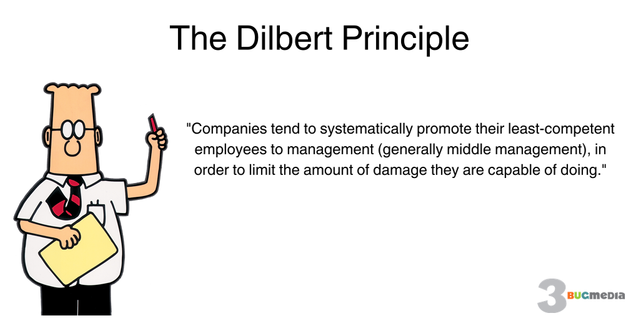Towards Voluntaryism (Part 6)
2.3. Education: Towards Reform and Rehabilitation
Towards Voluntaryism (Part 6)
The following suggestions and solutions for the educational establishment will address administrative changes, faculty changes and curricula changes, as well as the methods and mechanisms of implementation. Ideally, all three fronts will be addressed simultaneously. In practice however, it would appear reasonable that students, parents, engaged taxpayers and interested parties place the weight of their engagement on the administration first, as the administration is responsible for faculty and curricula changes.
These suggestions are provided with the intent of fostering greater social unity and weakening the societal injustice paradigm as defined in the introduction to this series.
Administration is the Heart of the Beast
In my post Frankenstein's Monster, Social Justice & Higher Education], I noted that:
...institutional suicide has gone into overdrive in recent years. Many universities are now enshrining the social justice movement in their administrations and faculty structures, paying for administrators (who earn more than actual educators in many cases) to provide "a safe listening space", compile "bias reports", "enact cultural appropriation prevention initiatives" as well as promote "social justice initiatives". Given that management growth across the board (non-teaching posts) has outpaced growth amongst both faculty and the student body, this should be of concern. Indeed, management now outnumbers teachers at many universities today. It shouldn't be surprising that the public University of California system is the worst culprit nationwide.
See also: Professor details how a 'cancerous disease' has ruined liberal arts colleges.
When bureaucrats, managers and administration outnumber educators at an institution of learning or in an educational system as a whole, the management structure is undoubtedly bloated, incompetent and/or redolent with redundancies. It is worth keeping in mind that every employee in public education that is not educating students is paid for by taxpayers. Many could be replaced by automated systems and smart contracts for a fraction of the cost or their jobs could be given to students to help them defray tuition costs.
As Paul Craig Roberts has noted:
"Consider, for example, America’s colleges and universities. According to a number of reports, 75 percent of budgets go to administration. When I attended Georgia Tech there was a president and a dean of students. Today universities have enormous administrative staffs. They have presidents, chancellors, vice chancellors, provosts, vice provosts, assistant vice provosts, deans, associate deans, and assistant deans for affirmative action, politically correct speech and demeanor, women’s rights, minority rights, homosexuals’ rights, and transgender rights. America’s universities are overrun with administrators. Education hardly exists."
Our educational system is obsolete but the current system is incapable of transformation for structural reasons. These include high sunk costs, bureaucratic sclerosis, self-serving fiefdoms that fear disruption of their gravy trains, a lack of understanding of the emerging economy, a dysfunctional centralized hierarchy and the state-funded exploitive machinery of student-loan debt.
Contrary to what many educational administrators care to believe and need you to believe, theirs is not a white collar job that demands high levels of intellectual competence or specialized training. The real brainwork happens in research and the classroom. Very few administrators are educating anybody, nor are most of them qualified to work as an educator in the field which they ostensibly "manage", meaning their insight as to positively influencing academic research or educational experience in the classroom is profoundly lacking if not nonexistent.
Janet Napolitano, President of the University of California system, is the perhaps the most glaring and odious example, having zero experience as an educator and abusing her position by sanctioning misleading budget practices that provided "atypical benefits" to favored employees rather than advancing educational goals.
Most bureaucratic positions come down to glorified paper shuffling and rubber stamping to abide by governmental laws or institutional regulations, many of which are opaque to the taxpayer and most certainly never voted on by them. Indeed, in my district it is typically the educators who have proven themselves too incompetent or antisocial to perform their jobs as teachers and mentors in the classroom that have been "promoted" to the regional department of education to fulfill a bureaucratic function of some sort that they learn within a year on the job with a few workshops. The Dilbert Principle is hard at work in the educational establishment.
While the soaring costs of education are a problem, there are already some modest steps being undertaken to address this failing, as can be seen in the article "Where Universities Can Be Cut". This article gives a good idea of just how bloated and redundant many aspects of education administration and management in the public education sector are. Unfortunately, much of this reform appears too little, too late.
Out of control costs and organizational inefficiency, while serious, are not in my opinion the most egregious problem facing education administration and management today. Rather it is the ideological slant towards coercive authoritarianism (that is fostered in bureaucracies in general) and the utter spinelessness or unwillingness of the administrators in upholding the essential tenets of the American way of life and the rule of law, most notably freedom of speech.
Combined with the fact that many of the new bureaucratic positions are essentially positions designed to institutionalize the social justice ideology (i.e. a coercive political belief system that advocates the expulsion and subjugation of those guilty of wrongthink) in the bones of the educational system, higher education as a whole is at serious risk in the United States and the west in general. It can only be remedied by completely revamping the administration and faculty at educational institutions via the intervention of a concerned public.
Suggestions as to how the administration should be restructured as well as concrete steps that interested parties can take to affect that change are included in the following chapters.
Next: Towards Voluntaryism (Part 7) Education: Administrative Solutions
...

.
.
.
Shot with a golden arrow,
Cupid Zero
.
I consider requests to write on a topic of your choice.
.
Don't forget to upvote, follow and resteem! Comments always appreciated.
.
.
.
.
.
.
.
.
.
.
.
.
.
If you aren't on Steemit, please consider supporting my work with a gift of:
Bitcoin: 1fruAGn9JcKqJJscreUpS2XurfLzksBe8
Litecoin: LQf19ExcdSFDjYj6NktRgzBnJ7NScVgikA
Ethereum: 0xEe3005b1D2D8963a85E1Ca4ff511acCd98A1E29D

